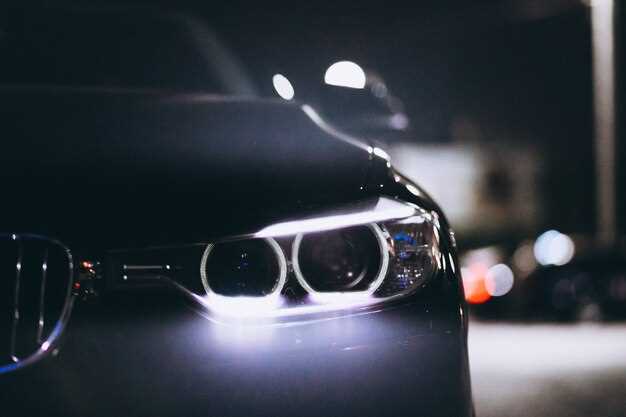
When it comes to enhancing your vehicle’s appearance and functionality, headlights play a crucial role. The choice between LED and HID (High-Intensity Discharge) headlights is not just about style; it’s also about performance, efficiency, and long-term value. Each type has distinct characteristics that appeal to different preferences, making it essential for vehicle owners to understand the nuances of these lighting options.
LED headlights have gained popularity due to their modern aesthetics and impressive longevity. They offer bright, white light that closely resembles natural daylight, providing excellent visibility on the road. In addition to their attractive appearance, LED headlights consume less energy, making them a more eco-friendly option. Their durability is another significant factor, as they are less prone to damage compared to traditional bulbs.
On the other hand, HID headlights have been a favored choice for many car enthusiasts for years. They deliver an extremely bright light output, which is beneficial for nighttime driving and provides a broad and far-reaching illumination. While they tend to consume more power than LEDs, many drivers appreciate the dramatic effect they have on the overall look of a vehicle. The blue-white hue of HID lights often complements custom modifications, enhancing the overall aesthetics of your ride.
In the following sections, we will dive deeper into the advantages and disadvantages of both LED and HID headlights, helping you make an informed decision that aligns with your vehicle’s custom look and your personal preferences.
Benefits of Upgrading to LED Headlights in Custom Builds
Upgrading to LED headlights in custom builds offers numerous advantages that enhance both safety and aesthetics. One of the primary benefits is improved visibility. LED technology provides brighter illumination, allowing drivers to see further and react promptly to road hazards.
Another significant advantage is the energy efficiency of LED headlights. Compared to traditional HID lights, LEDs consume less power, which contributes to overall energy savings in custom vehicles. This efficiency can lead to reduced strain on the vehicle’s electrical system, promoting longevity.
Additionally, LED headlights have a longer lifespan than their HID counterparts. With a lifespan of over 25,000 hours, upgrading to LEDs means less frequent replacements, saving both time and money in the long run.
From a design perspective, LED headlights offer greater design flexibility. They come in various shapes and sizes, making it easier to achieve a unique look for custom builds. This versatility allows vehicle owners to personalize their lighting setup, enhancing the overall style.
Moreover, LED headlights produce a crisper color temperature that closely resembles daylight, thus reducing eye strain during nighttime driving. This feature not only improves the driver’s experience but also contributes to overall safety on the road.
Finally, many LED systems come with quick installation features, making them user-friendly for enthusiasts who enjoy DIY customizations. The simplicity of upgrading to LED headlights adds to their appeal, making them an attractive option for those looking to enhance both functionality and style.
Comparative Analysis of HID and LED Headlight Performance
When it comes to upgrading your vehicle’s headlights, two popular options are High-Intensity Discharge (HID) and Light Emitting Diode (LED) systems. Each type has its unique characteristics that affect performance, longevity, and overall vehicle aesthetics. This analysis will explore key factors in their performance comparison.
Brightness and Lumen Output
Brightness is a critical factor for headlights, directly influencing visibility and safety. Both HID and LED headlights offer impressive lumen outputs, but they differ in their distribution and intensity:
- HID Headlights: Typically produce a higher initial lumen output than LEDs, reaching up to 3000 lumens around the high beam. However, their brightness can diminish over time.
- LED Headlights: Generally provide consistent brightness, although their initial output may be lower, usually ranging from 2500 to 3500 lumens. LEDs maintain their luminosity longer compared to HIDs.
Color Temperature
The color temperature of headlights affects visibility and driver comfort. It is measured in Kelvins (K):
- HID Headlights: Available in a range of color temperatures, typically from 4000K to 6000K. Light in this range appears bluish-white, which some drivers find aesthetically pleasing.
- LED Headlights: Commonly emit light in the range of 5000K to 6500K, producing a crisp, white light that closely mimics daylight. This can enhance visibility, especially under poor weather conditions.
Energy Efficiency
Energy consumption is crucial for both performance and sustainability:
- HID Headlights: Consume more energy than LEDs, typically around 35-55 watts, which can impact your vehicle’s electrical system over time.
- LED Headlights: Highly energy-efficient, using only 15-25 watts while providing similar or better lumen output compared to HIDs.
Lifespan and Durability
Longevity is another essential consideration, especially for frequent drivers:
- HID Headlights: Generally last around 2000 to 4000 hours before needing replacement, which is less than that of LEDs.
- LED Headlights: Can last upwards of 25,000 to 50,000 hours, making them a more durable choice in the long run.
Heat Production
Heat generation can influence the efficiency and lifespan of headlights:
- HID Headlights: Produce significant heat, requiring proper ventilation to prevent damage to surrounding components.
- LED Headlights: Operate at lower temperatures, reducing the risk of heat-related damage, and usually have built-in cooling systems to manage this effectively.
Installation and Cost

Cost and installation complexity can also affect the choice between HID and LED systems:
- HID Headlights: Installation can be more complex, often requiring professional assistance. Initial costs may be lower than LEDs but can vary based on the vehicle.
- LED Headlights: Generally easier to install, and while the upfront cost is often higher, their longevity can lead to lower overall costs over time.
In conclusion, both HID and LED headlights have distinct advantages and drawbacks. Choosing the right headlights for your custom vehicle will depend on your specific needs related to brightness, efficiency, lifespan, and aesthetic preferences.
Installation Considerations for Custom Headlight Upgrades

When considering a headlight upgrade for your vehicle, several key factors should be taken into account to ensure optimal performance and compliance with regulations. First, it is crucial to choose the right type of headlights for your specific vehicle model. Check compatibility with your vehicle’s make, model, and year to avoid any fitment issues.
Next, consider the wiring and electrical requirements. Upgrading to LED or HID headlights may require additional changes to your vehicle’s wiring harness or relay systems, as these lights often demand different voltage and power levels compared to standard halogen bulbs. Make sure your electrical system can handle the new installation to prevent potential burnout or damage.
Additionally, aim for a proper installation that guarantees correct alignment of the headlights. Misaligned headlights can result in poor visibility and may dazzle other drivers, leading to unsafe driving conditions. Using adjustable mounting brackets or following manufacturer guidelines during the installation can help achieve the right beam pattern.
It’s also important to consider local regulations regarding headlight modifications. Some areas have specific laws about brightness levels and color temperature for headlights, especially when it comes to HID and colored LED options. Ensure your upgrade complies with these regulations to avoid fines and ensure road safety.
Lastly, take into account your own skill level in performing the installation. While many upgrades can be done by enthusiasts, it’s advisable to consult a professional if you’re unfamiliar with headlight systems. A proper installation not only enhances aesthetics but also ensures functionality and safety on the road.



